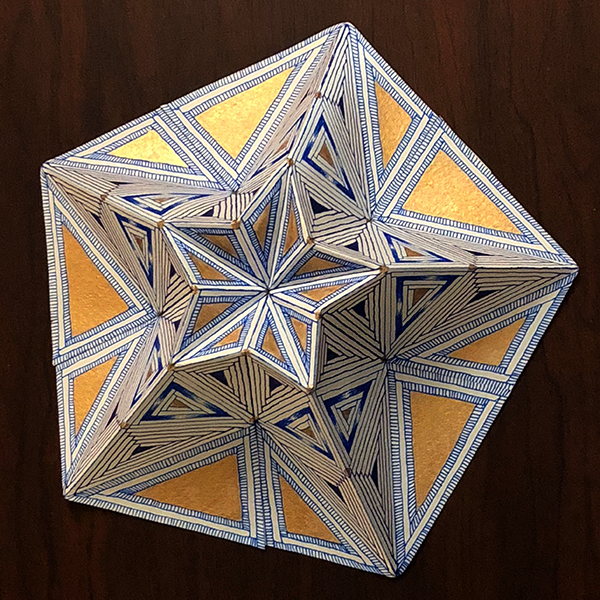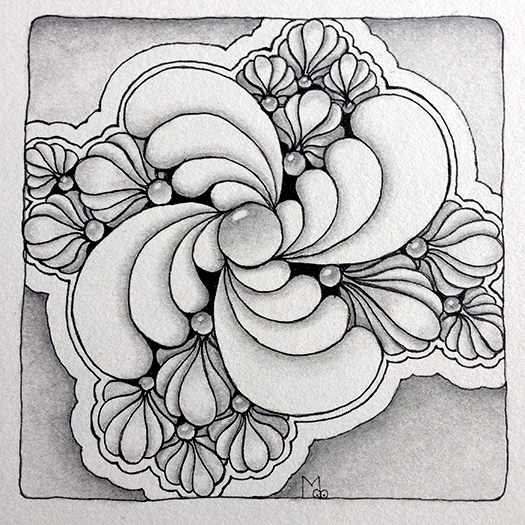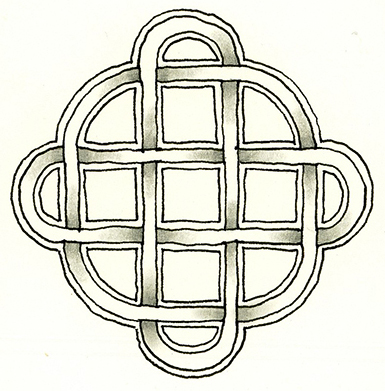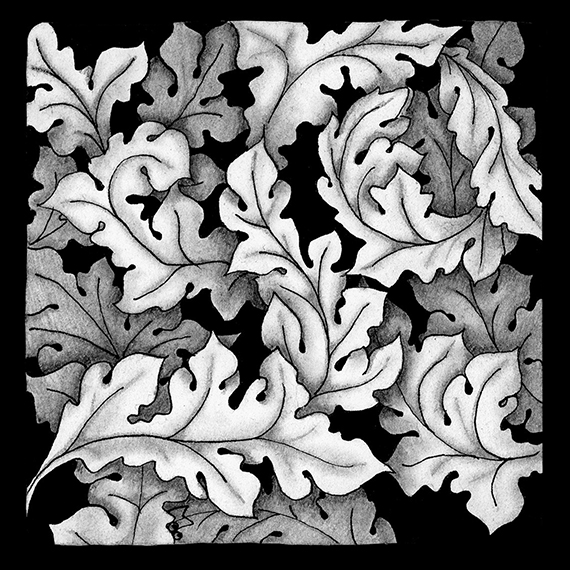
This year I’ve been participating in the 12 days of Zentangle, a series of projects presented by Rick, Maria, Molly and Martha from Zentangle HQ. They have thoughtfully provided a project pack with all the supplies needed to follow along with the YouTube videos they have posted. Project Pack 02 can be purchased from their web site, however, you can also choose to use what supplies you have on hand, which is what I decided to do. The day 7 project makes use of a pre-strung Zendala so off I went in search of my pre-strung Zendalas. Well I couldn’t find them anywhere but I did run across a pattern I had printed for a 3D star that was posted last year by Dorian Eng, CZT. I could see that it could easily be substituted for the Zendala used in the day 7 project. Well the resulting 3D star has received a lot of attention and many people have asked for the instructions for making it, thus this post.

Dorian has graciously given permission to duplicate her pattern and provide it to you. I’ve created a PDF with two sizes that you can download from this link DorianEng-3D-Star. (Note: it will open in your browser and you can save or print from there.) They are designed to be printed on 8.5 x 11 paper. I recommend a heavier weight paper, at least 60 or 70 pound, but not too heavy or it will be hard to fold.
UPDATE: Apparently this PDF is not displaying or printing correctly in some browsers (Firefox). A temporary fix for this issue is to view the file from another browser or download the file and view and print it that way. I’m pretty sure I can fix the file but will not be able to fix it till after Christmas.
UPDATE: The PDF has been fixed so that you can now view it using the FireFox browser.

So here are the steps to create these stars:
- Print the size star you want on a heavier weight paper and then cut it out along the solid lines. Don’t forget to cut the 5 outer diamond shapes in half along the central line.

- I found that it is much easier to fold the star shape if you score all the lines. To do this you will need some kind of scoring tool. Here are a couple of examples:

Anything with a fairly narrow blunt point will work.
- Using a straight edge I scored along all the printed lines.


- Next I folded back and forth along each scored line in both directions, with the exception of the small central star.

- For the small central star flip the paper so that the printed lines are to the back. Then carefully fold along the scored lines that outline the small star so that they are a mountain fold.

- I drew my tangles on the unprinted side. You can see the basic shapes where the tangles go as defined by the folds. I drew over the folds to further define the sections.

- I further broke down the larger sections into three smaller ones.

- This is the point where I added my tangles. You can use any tangle you want to fill in the star. I followed the instructions from the day 7 video to add my tangles. Here is a link to the video. If you haven’t seen it I encourage you to watch it, you might recognize the interweaving of auras as the same technique used in my tangle Fassettoo.

I used two colors of blue micron and gold Gellyroll.
- To make the star 3D fold as indicated on the printed template. You can finish the star in two ways.

Fold the outside sections back under each arm of the star and glue.

Or overlap the outside sections and glue to form a pentagon shape.
- Here’s my final star. I chose the second option. I like the way the gold accented the large star shape and complemented the small inner star.


Hope you all have fun with this and thanks again to Dorian for sharing.
Blessings and Happy Holidays,
Lynn












































 Then add rounded triangle and semi circle shapes as shown.
Then add rounded triangle and semi circle shapes as shown.























































